How Business Messaging Transforms the Traditional Sales Funnel
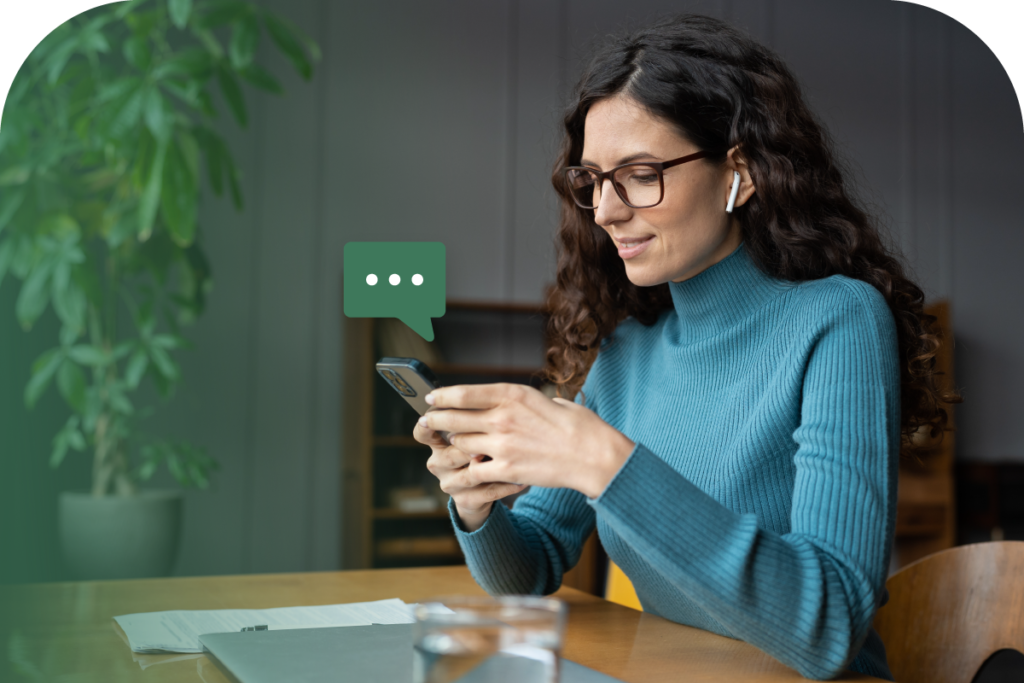
One of the first topics covered in just about any introductory business class is the sales funnel and the stages within it. In other words, the steps a consumer goes through when making a purchase.
Though there are many variations of the sales funnel out there, a simple one (that’s relevant to B2C brands) might include the following stages:
- Awareness
- Consideration
- Conversion/Purchase
- Retention/Loyalty
But the path to purchase (and long-term loyalty) is rarely as simple as these textbook funnels would have you think. Rather than being a straightforward, linear journey, it’s often full of twists and turns, as illustrated in this graphic from Forrester.
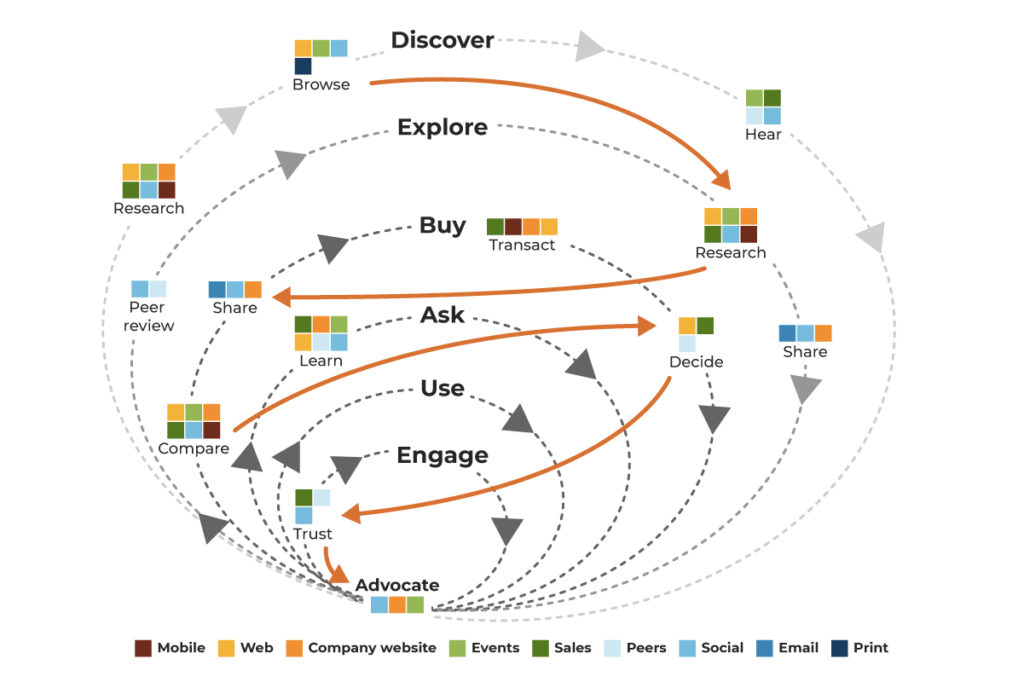
The rise of online browsing and buying is further complicating the purchase journey. Online shoppers (and those who do their research online before making an in-store purchase) have endless information at their fingertips. It’s not uncommon for them to zig zag through the funnel, take detours, or even skip steps altogether.
The growing popularity of business messaging channels including Google’s Business Messages, Meta Business Messaging tools, and others is further transforming the traditional sales funnel – and the way consumers move through it.
What is Business Messaging
By now, just about all consumers with a mobile phone use messaging apps like WhatsApp, WeChat and Facebook Messenger to keep in touch with family and friends. Statista research tells us that nearly 91% of worldwide internet users use chat or messaging apps.
A growing number of consumers are using these tools to connect with brands, too.
According to data from Meta, people and businesses exchange 20 billion messages each month. And 61% of messaging app users in the US have messaged a business in the past three months.
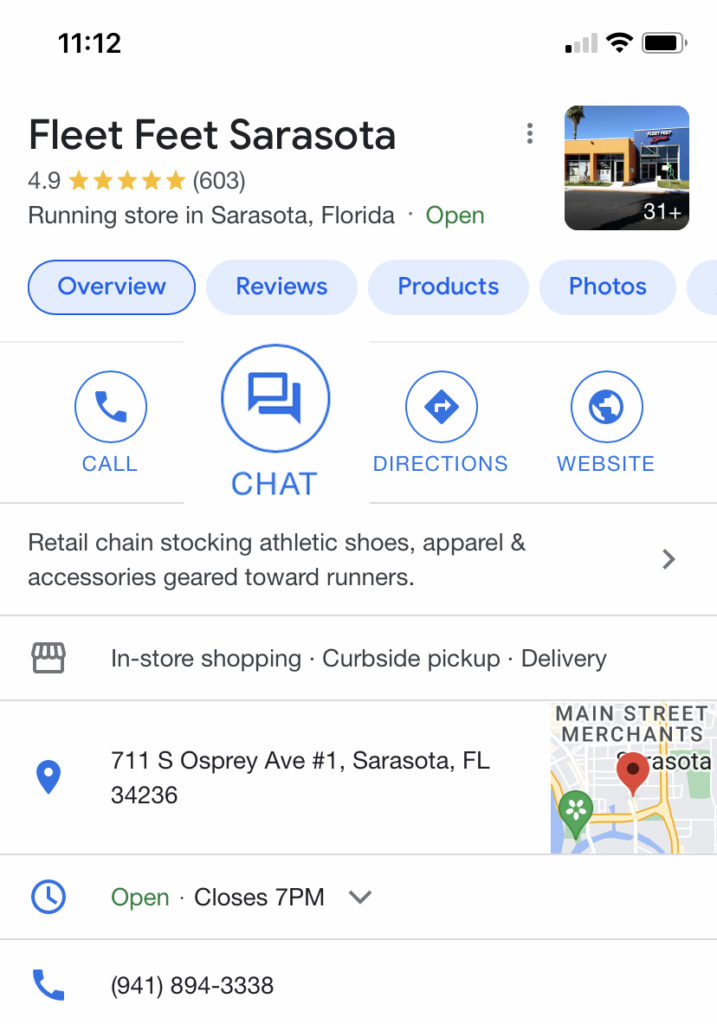
Today’s consumers have high expectations. They want fast, friendly, personalized engagement from brands. And they want to be able to access help whenever they need it, via their channels of choice.
Business messaging tools make this possible. With tools including Google’s Business Messages, Meta Business Messaging Tools, WhatsApp Business, SMS, and others, brands can interact with consumers in their moment of need, via their preferred channels – wherever they are on the purchase journey.
Typically, brands use a combination of automation, such as chatbots or digital assistants, and live agents to fuel their business messaging strategy.
Consider a consumer doing research online prior to making a purchase. 70% of online experiences start with a search engine, and 92% of those start on Google. So, like many others, the shopper navigates to Google to find a store location for a shoe brand. When they do, they see they’re able to chat directly with the brand. They initiate a chat with the brand to see if they have a particular style and size available. The product is available, and the customer is able to pay for it online – and swing by the store after work to pick it up.
Or, consider another shopper browsing Facebook – who is in the market for life insurance. The consumer is served up an ad for a life insurance company, with a CTA to engage with them via Messenger. The consumer can ask questions, get a quote, and even purchase the policy – right from Messenger.
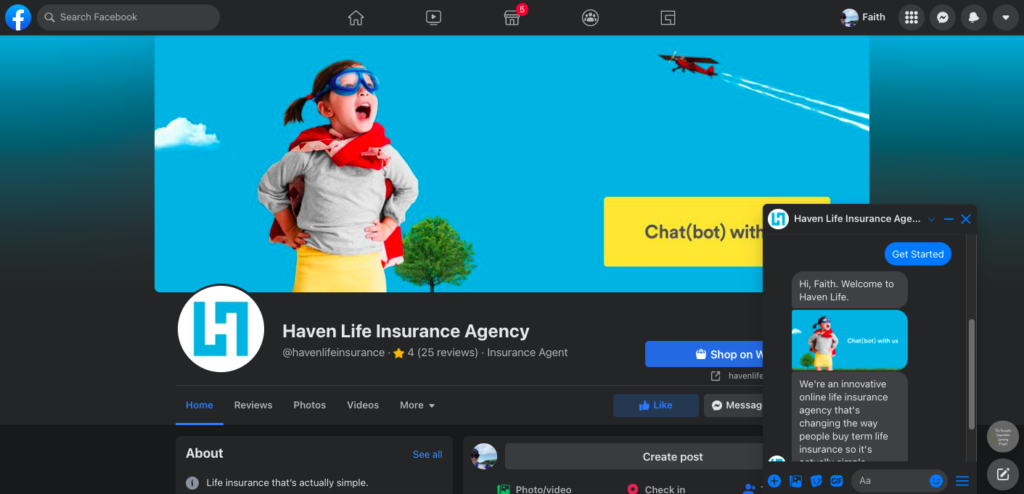
Let’s zoom in further to explore how business messaging is transforming the four stages of the simplified sales funnel we mentioned earlier: awareness, consideration, purchase and loyalty.
Stage 1: Awareness
When a consumer is in the awareness stage of the purchase journey, they may have identified a need – and are just starting to explore their options. At this stage, they’re hungry for information and have lots of questions to get answered.
But oftentimes, they don’t want to pick up the phone or visit a store to ask those questions – especially because they’re just checking things out. Instead, they want to be able to interact with brands via messaging to learn more.
For example, a consumer might be exploring online mental health subscription services. They want to learn more about these services, so they initiate a conversation with one brand. The brand uses a chatbot to answer simple inquiries via Facebook Messenger.
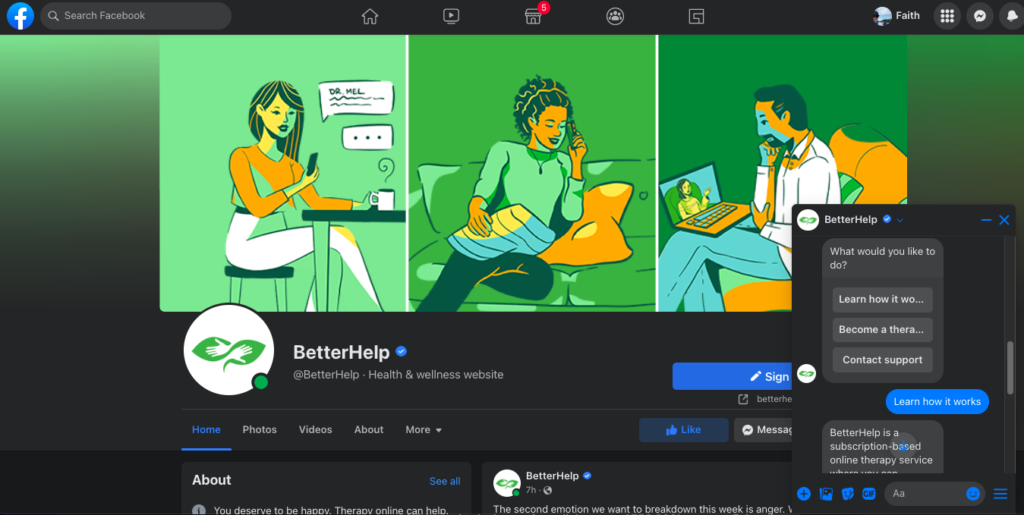
Or, there might be a consumer paging through a fashion magazine at the doctor’s office. Though she’s not actively looking to purchase cosmetics, she sees an advertisement that catches her eye for a brand she’s heard good things about. The ad includes a QR code, which she scans with her phone. By doing so, she initiates a chat with the brand to get personalized recommendations, based on a photo she uploads of herself. Though makeup wasn’t top of mind, a conversation and personalized recommendations from the brand convince her to skip through the funnel to make a purchase.
Stage 2: Consideration
Consumers in the consideration stage of the purchase funnel are deeper into their research and narrowing their options. They may be comparing multiple brands. Or, they may be deciding between multiple products from the same brand.
Engaging messaging experiences can help shoppers find the products that best fit their needs – and move them closer to making a purchase.
For example, a consumer may know she wants to make a makeup purchase – but she’s deciding between two different products. She sends a text message to the brand asking for recommendations on the product that’s the best fit for her needs.
Or, another shopper might be researching jeans and wants to know the best options for a skinny fit.
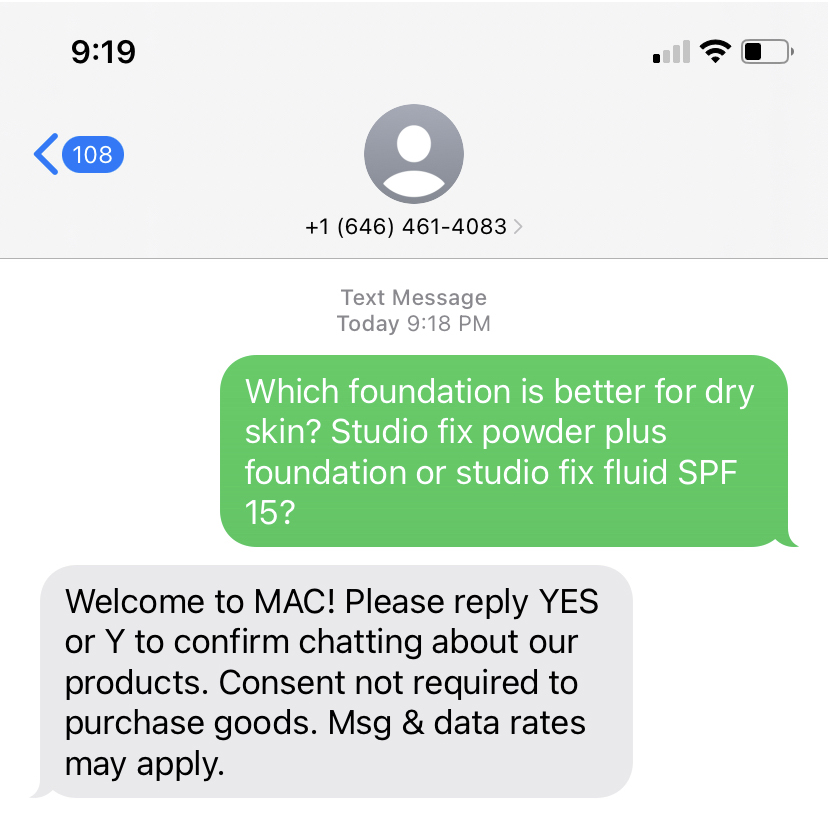
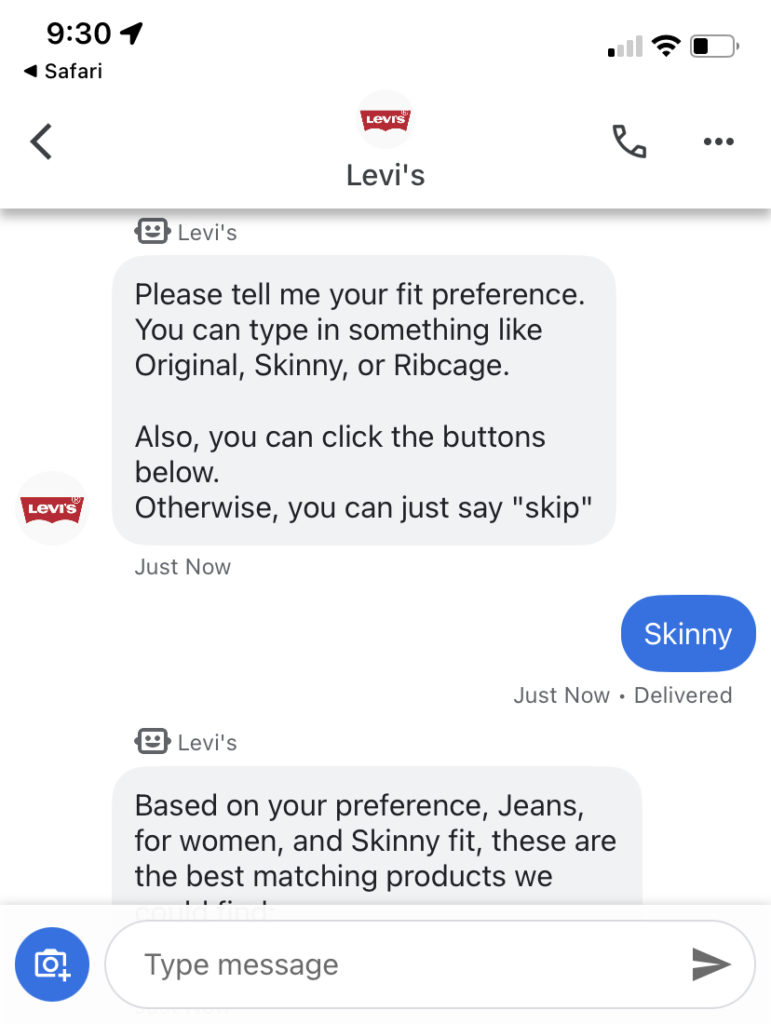
Engaging with shoppers via messaging during the consideration portion of the funnel enables brands to make positive, authentic connections. These experiences will boost consumer perception of the brand – and increase their likelihood of making a purchase.
Stage 3: Purchase
A consumer finds a product that’ll fit their needs. But does that mean they’ll make a purchase? Not exactly. According to Baymard, the average cart abandonment rate is 69.82%.
Messaging, however, can be an important tool to get more shoppers across the finish line.
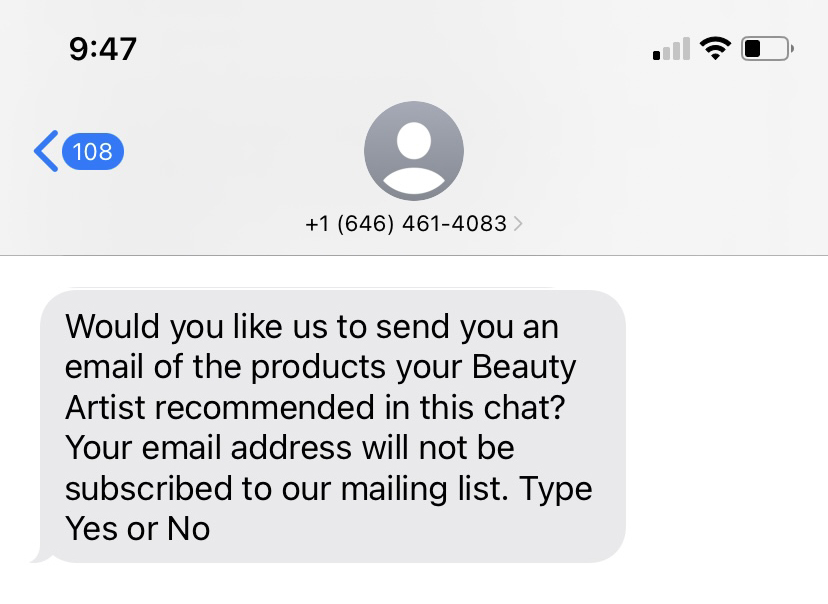
Consider a consumer shopping for sunglasses. They initiate a conversation with a particular brand via Facebook Messenger, and the brand helps answer their questions and provide personalized recommendations. However, the consumer doesn’t make a purchase. A couple days later, the consumer gets an automated message via Messenger, letting them know about a current promotion. The consumer finally makes a purchase.
Or, perhaps the consumer who engaged in a chat with a cosmetics company via SMS didn’t end up converting. The brand might send her an automated message, asking if she’d like them to send her an email with the products recommended during the chat. She provides her email address, takes another look at the recommendations, and ultimately, makes a purchase.
Engaging with shoppers via messaging can ensure your products remain top of mind to them – and that they ultimately end up making a purchase.
Stage 4: Retention and Loyalty
Acquiring customers is important. But so too is retaining the ones you’ve got. According to an infographic from Invesp, existing customers are 50% more likely to try new products. And, they spend 31% more than new customers.
Business messaging can help you retain more customers long-term.
If a customer is dissatisfied after making a purchase, messaging a brand – and getting a quick resolution – can restore their trust. Per Salesforce Research, 78% of consumers will forgive a company for a mistake after receiving excellent service.
Brands can also use messaging to drive repeat purchases from happy customers. For example, a contact lens brand might send an automated text message to a consumer, letting them know they’re due to order again.
In addition, messaging can be used to drive upsells and cross-sales. For example, a consumer might reach out to an insurance brand via messaging to ask a question about their current policy. And, after answering their questions and building rapport, the agent might suggest additional coverage.
Post-sale interactions are an opportunity to resolve issues, delight customers, and foster long-term loyalty.
Start Connecting with Your Customers Throughout the Funnel
The path to purchase is rarely linear. And business messaging channels are further transforming the traditional purchase funnel.
Increasingly, consumers prefer to engage with brands via messaging. Brands must be equipped to connect with shoppers via their preferred channels – wherever they might be in the sales funnel.
Ready to see how Messaging Studio from 1440 allows winning brands to engage with consumers on their favorite messaging channels – all within Salesforce? Contact us to learn more.